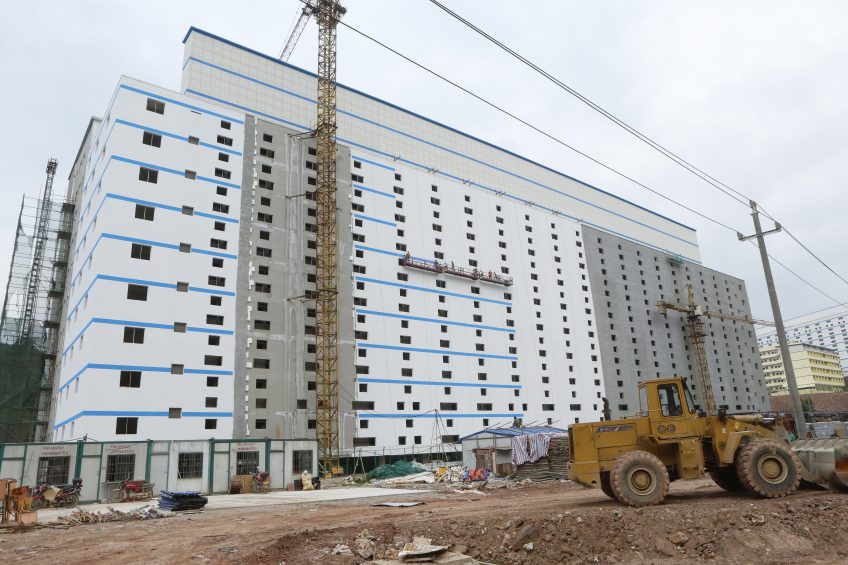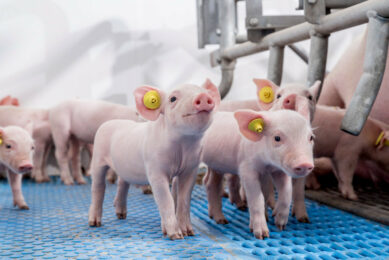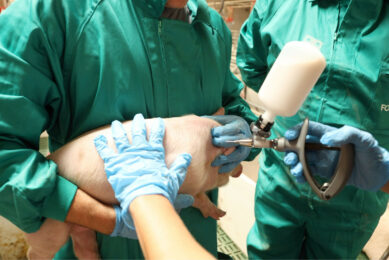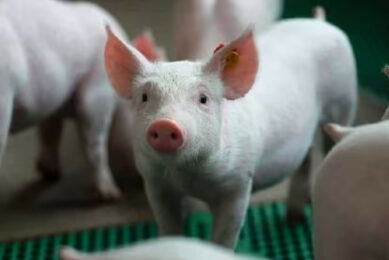Why build multi-storey pig houses?

Chinese pig producer Yangxiang has chosen to construct sow houses with 7, 9 or even 13 levels. According to the company’s owner, economy of scale, efficiency and healthy pigs are the key factors in a free pig market.
The designer of the multi-storey pig houses usually never appears in public. For once, he has made an exception to talk to Pig Progress – anonymously. He is willing to explain why his company chose to build multi-level pig houses. In his view, there are 2 important reasons, which are animal health and labour efficiency.
Contrary to conventional low buildings, in the Yangxiang pig skyscrapers the risk of pathogens hopping from one pig house to the next through ventilation air is much lower. After all, in conventional low buildings, pig houses are lined up parallel to each other. Outgoing air thus can easily enter the next one.
Air leaving the pig houses high above
In the Yangxiang multi-storey pig houses, the air enters on the side and will leave the pig house about 15 m above the roof. Per floor of 1,000 sows there is air supply and mixing of ingoing air or animals does not take place.
Staff will always stay on the floor they are responsible for. The farm also takes care of its own breeding, so there is no need for the introduction of new gilts. Finally, the piglets will be moved away from the multi-level pig house after weaning.
Disease pressure in multi-storey pig houses
Should there be an outbreak of a disease, then it will stay isolated to that one floor. In addition, in the wide surroundings around the farm, there are no additional pig farms – and to be even more certain, all incoming air is being filtrated. It’s hardly possible of more measures to avoid the occurrence of pathogens.

For now, 2 multi-level buildings of 7 floors have already been finalised. Two additional buildings of 9 floors will be ready in the course of this year and within 2 years, 2 buildings will follow with 13 floors.
Building costs of multi-level pig houses
The building costs of a multi-storey pig house are €2,000 per sow, without piglet area. Should there be a conventional pig farm, then the investment is €500 less per sow. These multi-storey pig houses do have pad cooling, virus filters as well as air conditioning.
The additional costs can be earned back during exploitation. Yangxiang can do with 4 employees per 1,000 sows. In case of conventional, 1-floor pig farms, this can be as much as 10.
First piglets were delivered in December 2017. Cost price of these animals was €25 per 7 kg piglet. Starting up problems are now a thing of the past; the cost price of a weaned piglet is now just over €23 per piglet.
Soon in Pig Progress: A farm visit, looking inside a 9-storey pig farm.











